Living With A Zero SR

A great commuter you're probably overlooking
We’ve tested plenty of electric motorcycles over the years here at MO. In the process, we’ve been able to witness firsthand how rapidly e-bikes have evolved. Through it all, however, we get asked the same questions over and over: 1. How far will it go on a charge? and 2. How long will it take to recharge the batteries? There used to be a third question – how fast will it go? – but through our testing and experiences with the greater e-bike community, speed no longer seems to be a concern amongst the critics.
In the quest to satisfy curiosity surrounding the first two questions, we ordered up a 2015 Zero SR and lived with it for two months. We used it as a daily driver, its intended environment, to experience just what it’s like to ride a bone-stock electric bike in the everyday. As you can see from the photos, ours came with a few choice accessories, which we’ll cover later on. For now, let’s tackle the two aforementioned questions head-on.
Life With A Zero
You want to know how far a Zero will go on a single charge. The answer to that could be upwards of 100 miles, if you ride gingerly and equip your S, DS or SR with the optional Power Tank like we did. We didn’t make it to 100, but we still managed over 90 miles on a single charge during a ride through city streets, open freeway, then congested freeway. We rode as we normally would, with no special technique in regards to conserving energy. The only adjustment we made was switching the ride mode to Eco approximately halfway through our ride in order to conserve energy where possible. This still enabled us to travel at an electronically-governed 70 mph (Sport mode is governed at 100 mph), but we rarely reached that speed as SoCal gridlock for the last quarter of our ride meant filtering through traffic at a slower pace.
Nonetheless, in a real-world situation, we were pleasantly surprised to get more than 90 miles on a single charge. At the end, the battery level display on the dash was reading in the single digits when we made it back to home base: Casa de Brasfield. Could we have reached triple-digit mileage on that day? Maybe, but it would’ve been cutting it close. A range of more than 100 miles is possible if freeways/highways are limited, and speeds are kept below 65 mph.
2015 Zero New Model Introduction
Considering the average American’s commute to work is far less than 90 miles (more like 15, actually, according to a survey from the U.S. Department of Transportation) the SR easily has enough juice to get you to and from the office. When equipped with the optional bags, it can even accommodate a run to the grocery store if you’re short on TV dinners for the week. If your workplace has EV charging stations, you can refill your batteries back to 100% before clocking out for the day, sometimes free of charge. But more on that later.
This brings up another realization: it’s not often that we’re traveling 90 miles or more in our typical day. For those who do, this or most other electric motorcycles currently available may not be for you. However, we’re guessing the number of people who are actively looking at a Zero and whose daily travels get into the triple digits, mileage-wise, are relatively low. For the rest of you, we feel confident saying range anxiety doesn’t need to be a concern anymore for normal transportation and commuting duties.
Obviously, we concede electrics and their relatively short range aren’t yet a viable option for touring-oriented riders. Sport riders may also be disappointed, as simply riding to/from the twisties will consume much-needed energy, while the aggressive nature of canyon riding will not only zap power quickly, but could also overheat the air-cooled motor, potentially leading to thermal cutback issues as the bike attempts to cool off.
Parts and Accessories
In order to make the SR as utilitarian as possible for the daily grind, Zero delivered an SR with heaps of items from the accessories catalog, including the RAM smartphone mount ($70), commuter windscreen ($200, including mounting kit), 21-liter Givi side cases ($600, including mounting kit) and Givi Trekker top box with 33-liter capacity ($550, including mounting kit).
To maximize our range, our SR came with the optional Power Tank ($2495), which adds 2.8 kWh to the standard 12.5 kWh battery (nominal rates of 2.5 kWh and 11.0 kWh, respectively), for a max output of 15.3 kWh, or 13.5 kWh, nominal. To optimize charge times, we were given not one, but two Delta-Q quick-chargers ($600, each), which require the use of a $250 Y-adapter to work together and throw electrons at the batteries. Lastly, since more and more parking lots are equipped with J1772 charging stations instead of standard wall outlets, a J-plug adapter ($300) was ordered to make charging options on the go easier.
The Life Electric: Next-Gen Hot Rodding + Video
Factor all that into the $15,995 starting price for a standard Zero SR (not accounting for rebates or incentives in your state), and the nearly $22,000 price tag is admittedly a tough pill to swallow, no matter how much you want to reduce your dependency on gasoline. However, you could do without some of the accessories and slash the price considerably. Nonetheless, we wanted to live the life of someone who has fully bought-in to the e-vehicle lifestyle to see how useful a highly accessorized Zero could really be.
Side note: because J1772 charge ports are becoming more commonplace throughout the country, Zero has quietly moved away from the CHAdeMO quick-charging system it promoted only a couple years ago, with no charge adapters or other related accessories available in its accessories catalog.
Plugging In
On the topic of charging, there’s good news and bad news. The good news is there are numerous charging stations popping up throughout the country for electric vehicles, and apps like ChargePoint are great for helping EV owners locate them; the app even lists civilians who are open to having strangers charge in their driveway! Depending on the location, sometimes stations will let you charge for free. No matter where you go, however, the J1772 adaptor will come in handy, because even though some stations accommodate standard 110-volt wall outlets, nearly all of them will have a J1772 plug. However, the J-plug adapter simply allows one to plug in to a charge station – it does nothing to shorten charge times, which is limited by the Zero’s integrated 1.3 kW charger.
Here’s the bad news: On occasion, there are more EVs than there are charge stations available. Also, most stations charge (pun not intended) a fee, and in our experience some stations deliver a higher output than others. None of that matters, though, if you run into another problem we faced: Not every public charging station is reliable. On what would eventually become our 90-mile run, we attempted to recharge earlier in the day while grabbing a bite to eat. As it turned out, the station we visited wasn’t working. Using the Chargepoint app we found another … which also wasn’t working. After clocking approximately 50 miles and coming across a third, failed, station, we decided to bite the bullet and attempt to make it to the Brasfield residence, over 40 miles away.
Inside Batteries: Zero Motorcycles Senior Battery Specialist, Luke Workman + Video
As noted earlier, the power pack (a.k.a., the batteries) were down to single digits percentage-wise when we arrived. We hadn’t intended on running our SR this low on battery, but draining the batteries to nearly empty was a good test for real-world charge times. After only plugging in the included power cord to the 110v wall outlet, the onboard charge indicator on the dash said it would take nearly 10 hours(!) to fully replenish. Then, after connecting the two Delta-Q quick-chargers, each providing an additional 1 kW of charging capability on top of the on-board charger’s 1.3 kW, with the Y-connector and plugging that into the bike (which must be done after the standard cord is inserted), the estimated charge time dropped dramatically to slightly more than three hours for a completely replenished power pack. The estimation was pretty close, too; we reached a full charge in about four hours. Zero says up to four external quick chargers can be paired with the S, DS and SR platforms. With that configuration, a full charge can be reached in a claimed 2.8 hours. Less, if you ditch the Power Tank option.
Keep in mind, too, that the bike doesn’t need to be fully recharged before unplugging, nor does it cause any damage to leave the cord in after full charge is reached. Think of it like your cell phone.
Of course, there are a couple caveats with the quick-charge system, other than the price. While each quick-charger can fit in one of the saddlebags (though they’re rather heavy), this isn’t meant to be a transportable system, as each individual charger needs to be plugged into a separate circuit (you run the high risk of tripping a breaker in your home otherwise). Good luck finding somewhere to do that while on the road. An optimal charge area is at the home, Evans’ home in this case, which conveniently has three separate circuits in close proximity to where the bike was parked.
Other Observations
Once questions about range and charging are answered, the question becomes, “What’s it like to live with?” As the editor who spent the most time with the SR, the first thing I noticed about using a Zero as a commuting machine is that nothing really changes. The controls are all the same. The obvious difference is there is no shifting, leaving the left appendages free to relax. Then of course there’s the lack of noise upon startup, convenient should your commute start early in the morning and you’d prefer not to make enemies with the neighbors.
The SR’s riding position is relaxed, with the bars set at a neutral position and the pegs fairly low to the ground. The seat is shaped well enough to allow a rider’s knees to grip the faux gas tank, and for my 153-pound frame, the padding was adequate. By the time I’d want to get up and stretch out, it’d likely be time to recharge anyway. Heavier riders may wish for additional seat foam.
The RAM mount on the handlebar has a large enough mouth to secure either an iPhone 6 or a Samsung Galaxy S5, though anything much bigger than that could be tight. Of course, one of the main reasons for the RAM mount is to be able to view the Zero app displaying from your phone. Apart from being able to act as a typical dashboard display, showing speed and state of charge, it’s also a cool rider aid, providing insight into the bike’s functions in real time. One can view a myriad of information like kilowatt hours used, cost per mile, motor temps, battery temps, distance or time until empty, and so much more. Maybe its neatest feature is the app’s ability to allow the rider to adjust top speed, torque and regenerative braking with the push of a few buttons.
We’ve documented in the past how spritely the SR likes to move, and its 68 horsepower, measured on the MotoGP Werks dyno, and claimed 106 lb.-ft. of torque, available instantaneously, all but guarantees victory in stoplight-to-stoplight drag races. It also comes in handy when merging onto the freeway, as the power makes it easy to find a gap to slip into. That said, E-i-C Duke wasn’t completely thrilled with the e-throttle response.
2013 Brammo Empulse R Vs Zero S ZF11.4 – Video
“Dialing on full throttle doesn’t deliver 100% power, so it’s the motor controller that is the ultimate arbiter of how much juice gets thrown to the motor,” he says. Nonetheless, power is deceptive, as you can easily find yourself going well over the speed limit in Sport mode, which is the mode I kept it in the vast majority of the time. That said, the slightly muted output in Eco mode certainly didn’t leave me feeling bored.
Once moving along with freeway traffic, one has time to appreciate the accessory windscreen, which can tilt on its mount to stand completely vertical or angle slightly toward the rider. Both positions suited my 5-foot, 8-inch frame, as the air moved much smoother around and over my head. Without the screen, wind blasts would be directed straight for my chest.
Suspension gets upgraded to Showa for 2015, and ride quality is centered on comfort over performance. Both Duke and I agreed that damping is well suited for the bumps and imperfections of city roads, though it’s at the expense of ultimate control when ridden aggressively. Still, “I’ll put up with an overabundance of front-end dive under heavy braking for something this plush,” says Kevin.
J-Juan may not carry the same cache as, say, Brembo, but the Spanish company’s braking components are quite impressive in bringing the SR to a stop. There’s firm, predictable lever travel, aided by the steel-braided line. Also, the Bosch ABS allows one to squeeze the front lever fairly hard before any hint of activation kicks in.
The bags and top case, too, were simple to use, though the top case’s square shape meant no helmets could be stored in it; even the small backpack seen in the photos was just a tad too large. Were it mine, I’d swap for the other Zero Givi top case shaped appropriately to fit a helmet.
The biggest difference to riding electric that I wasn’t expecting is when riding two-up. The linear power delivery and lack of shifting meant greatly reduced clanging of the helmets, and the system enables especially easy launches when on an incline. After riding on the back of the Zero, my wife, who couldn’t care less about motorcycles, confessed she liked riding on it better than other bikes she’s been on in the past. “I liked that it was quieter and the ride was really smooth,” she said. “It was easier to talk to you and I wasn’t hitting my helmet against yours.”
Of course, there are a couple complaints. Simply wheeling the SR around our garages and our inclined driveways reminded us of a few things: first, having the 45-pound Power Tank unit situated in its high perch makes the bike feel heavier than its 463-pound wet weight (with bags removed, but mounting brackets still attached) when pushing it around. Kevin noted the SR with the Power Tank “feels much heavier and less adroit than the S model I rode a couple years ago.”
Second, the high perch of the Power Tank also doesn’t do the SR any favors in the handling department, a trait we’ve mentioned in our past dealings with the SR. Kevin called its low-speed handling manners “truckish,” while higher-speed direction changes require slightly more effort from the rider compared to non Power Tank-equipped Zeros. Since this test was centered around commuting duties, we didn’t place as high a penalty on this fault.
Lastly, one needs to be very cautious when putting the sidestand down when the SR is parked on an incline, as we noticed our bike roll slightly on occasion. Zero, if you’re listening (err … reading), would it be so hard to equip all your models with an emergency brake? We suggest a system similar to that used by BMW’s C650GT, which activates the rear brake mechanically once the sidestand is deployed. Simple, elegant, and effective.
The Right Choice … For Some
Buying a Zero is obviously a very subjective decision based around a very close look into one’s daily transportation needs. While the range might be limiting for some, we feel for a large number of commuters, the SR will more than meet your range – and performance – needs. Of course, the cost of entry is a barrier for some, but Zero has actually lowered prices compared to 2014. Take into account the cost for electricity is less per mile compared to gasoline and maintenance costs are lower (belt-drive is almost maintenance free, and there’s no valve adjustments or oil changes, unlike the upcoming Victory Empulse, which requires it for the gearbox) and the price gap might make more sense in the long run to someone on the fence.
For my personal usage, it’s rare that the wife and I venture very far outside our surrounding zip codes, and we have a gas vehicle to use for those times we do. We were so impressed with the Zero that we’re considering picking up an electric four-wheeler for the everyday. Could I see myself owning an SR for the two-wheel commute? Yes, I could, but it would be an addition to my gas bike, not a replacement. At least for now.

Troy's been riding motorcycles and writing about them since 2006, getting his start at Rider Magazine. From there, he moved to Sport Rider Magazine before finally landing at Motorcycle.com in 2011. A lifelong gearhead who didn't fully immerse himself in motorcycles until his teenage years, Troy's interests have always been in technology, performance, and going fast. Naturally, racing was the perfect avenue to combine all three. Troy has been racing nearly as long as he's been riding and has competed at the AMA national level. He's also won multiple club races throughout the country, culminating in a Utah Sport Bike Association championship in 2011. He has been invited as a guest instructor for the Yamaha Champions Riding School, and when he's not out riding, he's either wrenching on bikes or watching MotoGP.
More by Troy Siahaan



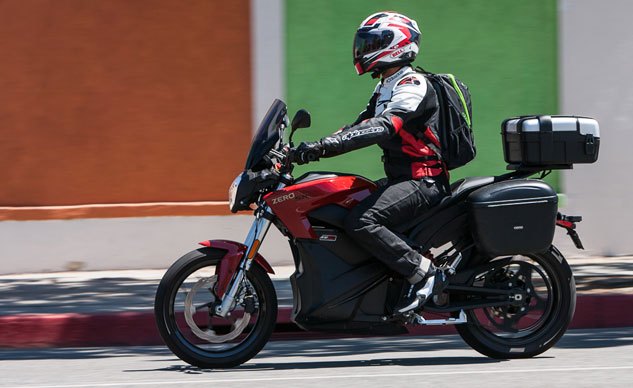


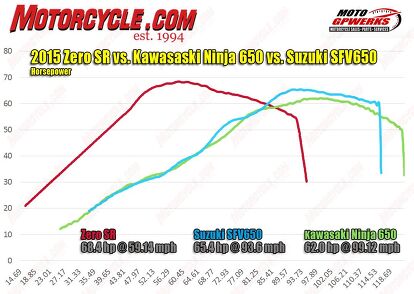








































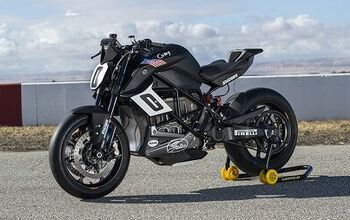
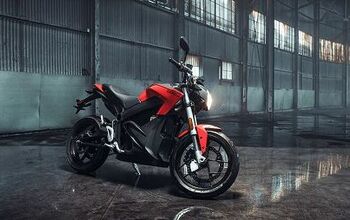
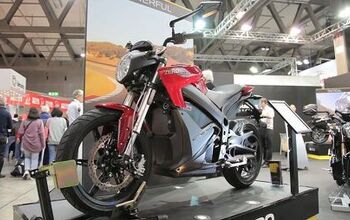










Comments
Join the conversation
Great review of Zero. For anyone who's seriously considering a purchase, there's a groupbuy happening now for the 2015 Zero SR that includes an $800 in store credit at Hollywood Electrics. More info: https://groupgets.com/campa...
Did you ever track how many miles you used per kilowatt? That would be a useful metric to know. For cars, in California (and depending on your electric company and plan) driving pure electric can cost more than gas. Now that gas prices have tumbled, it is even harder to justify at times on a cost basis.
I have a plug-in hybrid car and the cost per mile is more for electric than for gas and that was calculated when gas was about $4/gallon. Since I can choose when to use gas or electric to some extent I found that in my situation, electric only makes sense when under 45 mph when I am getting about 5-6 miles per kilowatt. Well it made sense when gas was $4/gallon. Now it doesn't make any sense to use electric unless I can plug in for free.
Since most public chargers base it on a price per hour, not how many kilowatts you use, unless you have a very fast L2 charger, it makes almost no sense to use the public stations. If you used a Zero at a Chargepoint in California, you'd likely spend the equivalent of about $9/gallon for gas at current typical Chargepoint rates. I love the idea of an electric motorcycle but in California I don't see how it works from purely an economical standpoint.